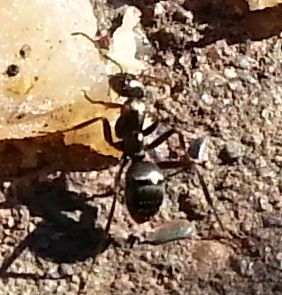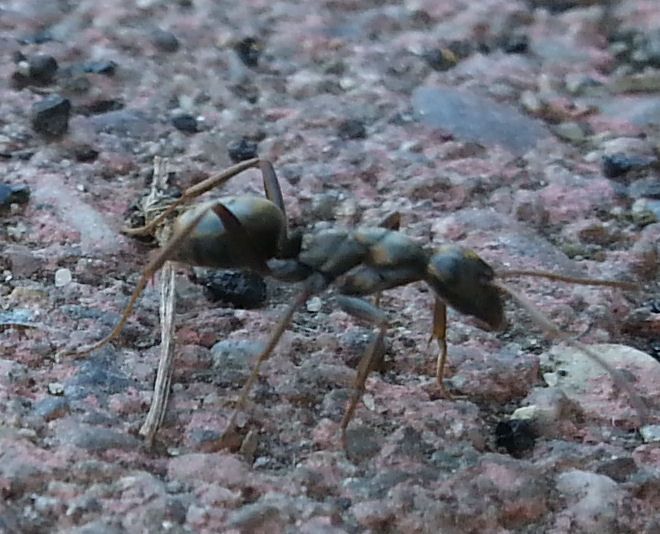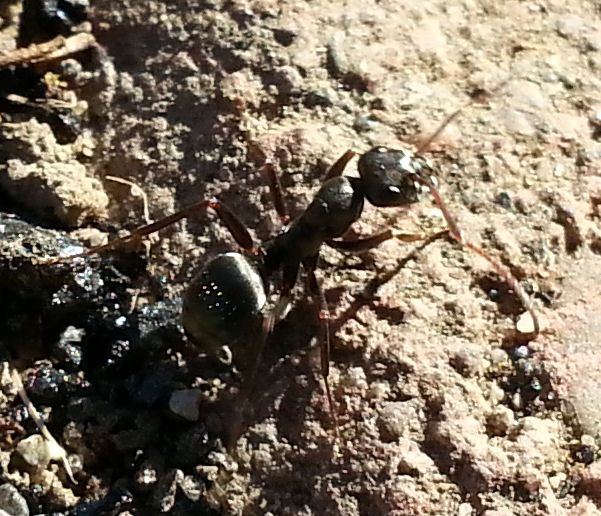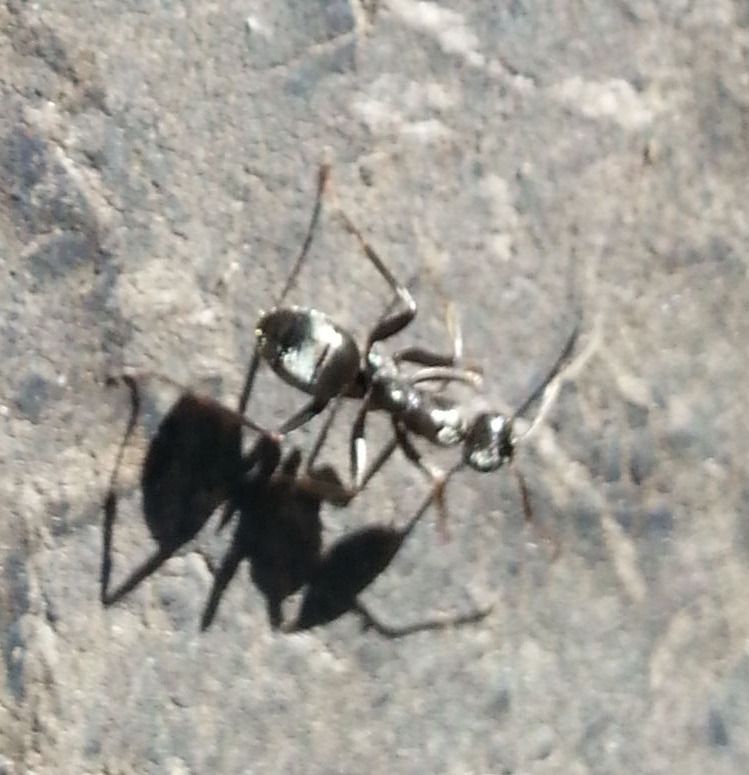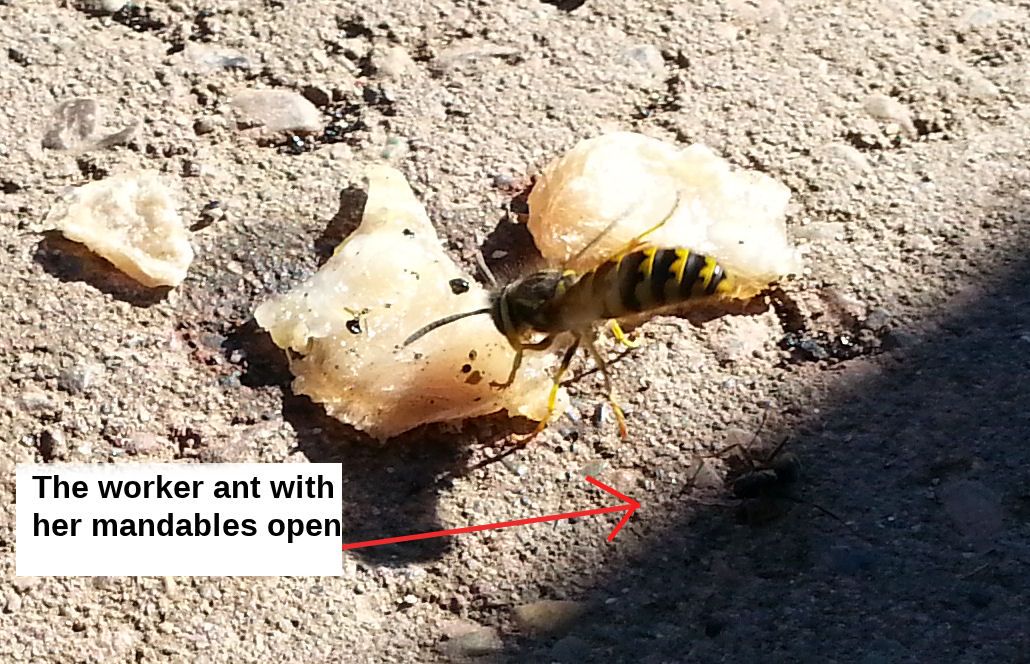Hello, I would like to know what kind of ant this worker is. Can anyone tell with Galaxy 3 phone pictures (all I have). I had a colony without a queen of these ants before, and I would love to know what they are! Thanks!
1. Lynnwood, Wa. USA. Outside of my back door, on the bricks. I gave her chicken.
2. 9-15-16.
3. Wondering around the backdoor, on the bricks.
4. 4.5mm Length
5. Black Coloration. Difficult to tell with phone camera. seemed to change color depending on the lighting may have lighter hues (brown/tan/orange color). Shiny in the sun, seems to have small hairs on her gaster.
6. One petiole, almond shaped eyes.
7. She kept chasing a yellow jacket who kept trying to steal her chicken!
8. N/A
If it’s not enough information or clear enough pictures then I understand, but thanks for trying! ![]()
